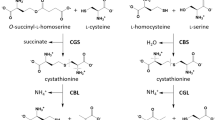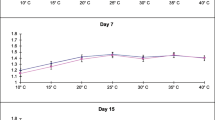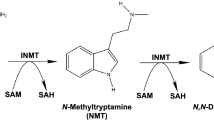Abstract
METHIONINE sulphoximine is toxic to a wide range of living organisms. Apart from the neurotoxic effect upon animals and the inhibition of the growth of certain bacteria, it also inhibits the germination of seedlings and the larval development of the insect Tribolium confusum (unpublished observations). In an earlier report1 it was shown that the toxic effect upon Leuconostoc mesenteroides is reversed by l-glutamine, and it is useful to know whether in higher organisms methionine sulphoximine also interferes with enzyme processes involving glutamine. It appeared pertinent, as a first approach, to examine the effect of methionine sulphoximine on the enzyme systems concerned in the synthesis of glutamine2,3 and the transfer of glutamyl groups4–8, as these are widely distributed and are considered important in the primary stages of peptide bond formation9,10. In addition to this general aspect there is a more particular interest attached to the question of whether, in mammalian tissues, there may be a relationship between sulphoximine and glutamine. This arises from the work of Tower and K. A. C. Elliott11, who have shown that on incubation of slices of cerebral cortex tissue, from animals convulsed with methionine sulphoximine, bound acetylcholine fails to increase, but that this anomalous effect is reversed if glutamine or methionine is added to the suspending medium.
This is a preview of subscription content, access via your institution
Access options
Subscribe to this journal
Receive 51 print issues and online access
$199.00 per year
only $3.90 per issue
Buy this article
- Purchase on Springer Link
- Instant access to full article PDF
Prices may be subject to local taxes which are calculated during checkout
Similar content being viewed by others
References
Heathcote, J. G., and Pace, J., Nature, 166, 353 (1950).
Speck, J. F., J. Biol. Chem., 179, 1387, 1405 (1949).
Elliott, W. H., Biochem. J., 49, 106 (1951).
Schou, M., Grossowicz, N., Lajtha, A., and Waelsch, H., Nature, 167, 818 (1951).
Grossowicz, N., Wainfan, E., Borek, E., and Waelsch, H., J. Biol. Chem., 187, 111 (1950).
Schou, M., Grossowicz, N., and Waelsch, H., J. Biol. Chem., 192, 187 (1951).
Stumpf, P. K., and Loomis, W. D., Arch. Biochem., 25, 451 (1950).
Delwicke, C. C., Loomis, W. D., and Stumpf, P. K., Arch. Biochem., 33, 333 (1951).
Hanes, C. S., Hird, F. J. R., and Isherwood, F. A., Nature, 166, 288 (1950).
Fruton, J. S., Johnston, R. B., and Fried, M., J. Biol. Chem., 190, 39 (1951).
Tower, D. B., and Elliott, K. A. C., Fed. Proc., 10, No. 1, 260 (1951).
Lipmann, F., and Tuttle, L. C., J. Biol. Chem., 159, 21 (1945).
Heathcote, J. G., Lancet, 257, 1130 (1949).
Reiner, L., Misani, F., and Weiss, P., Arch. Biochem., 25, 447 (1950).
Gershoff, S. N., and Elvehjem, C. A., J. Biol. Chem., 192, 569 (1951).
Author information
Authors and Affiliations
Rights and permissions
About this article
Cite this article
PACE, J., McDERMOTT, E. Methionine Sulphoximine and some Enzyme Systems involving Glutamine. Nature 169, 415–416 (1952). https://doi.org/10.1038/169415a0
Issue Date:
DOI: https://doi.org/10.1038/169415a0
This article is cited by
-
Identification and Characterization of ATP/ADP Isopentenyltransferases (ATP/ADP PpIPTs) Genes in Peach
Journal of Plant Growth Regulation (2019)
-
Possible treatment of end-stage hyperammonemic encephalopathy by inhibition of glutamine synthetase
Metabolic Brain Disease (2013)
-
An ultrastructural study of methionine sulphoximine-induced glycogen accumulation in astrocytes of the mouse cerebral cortex
Journal of Neurocytology (1975)
Comments
By submitting a comment you agree to abide by our Terms and Community Guidelines. If you find something abusive or that does not comply with our terms or guidelines please flag it as inappropriate.



